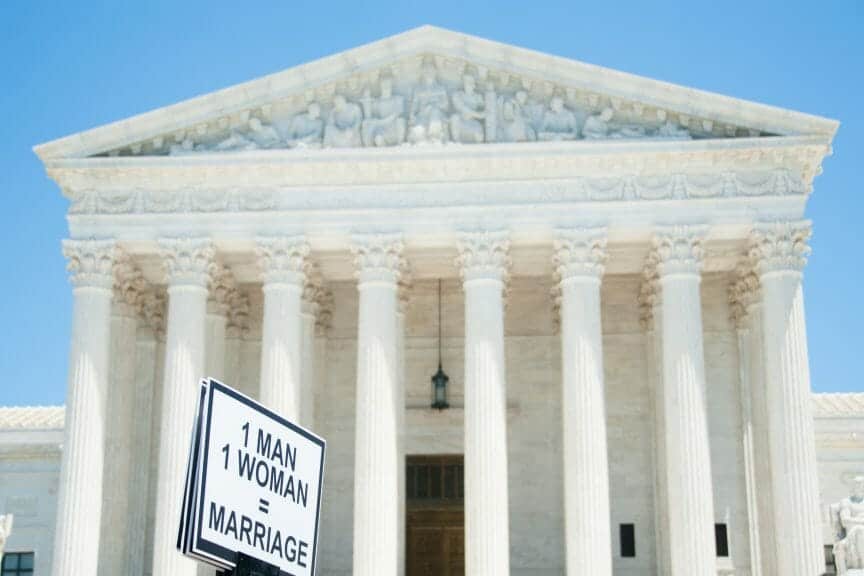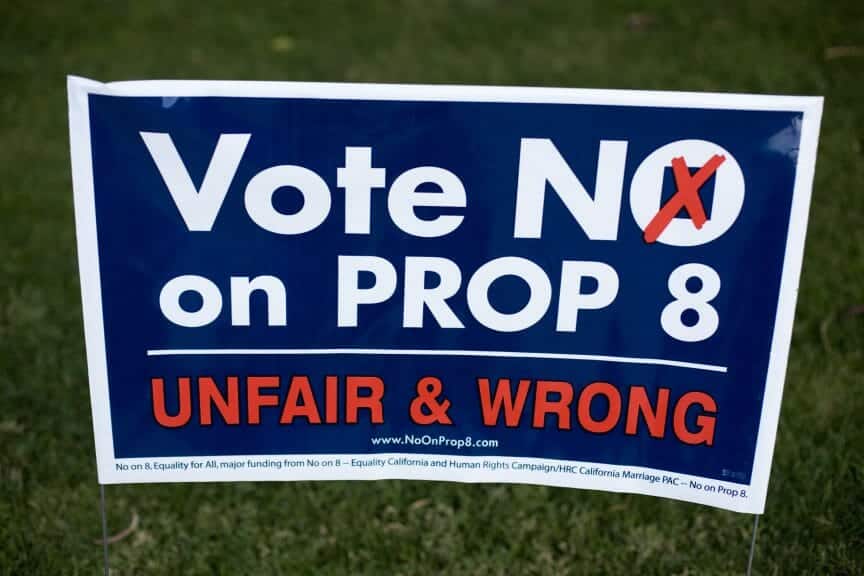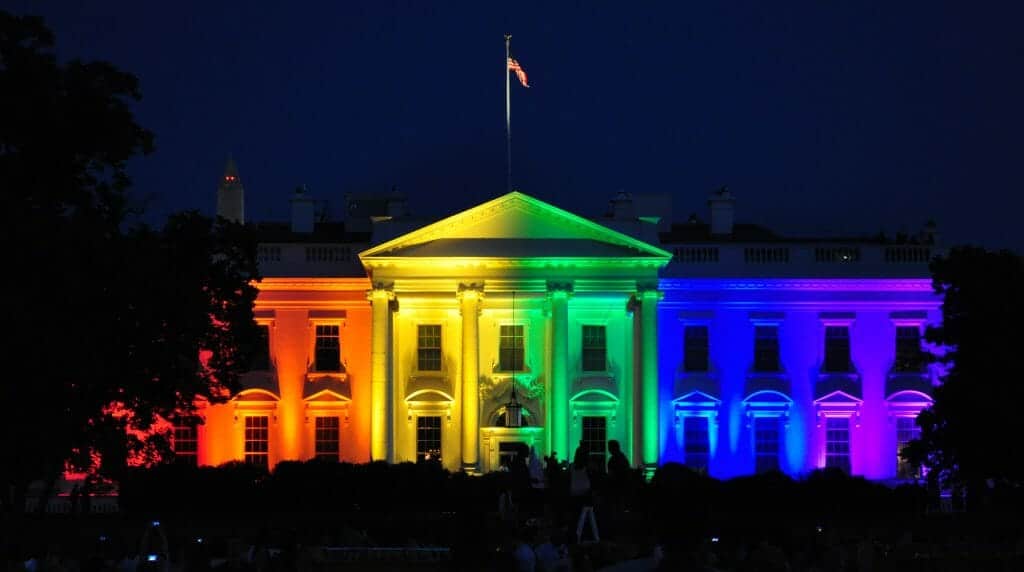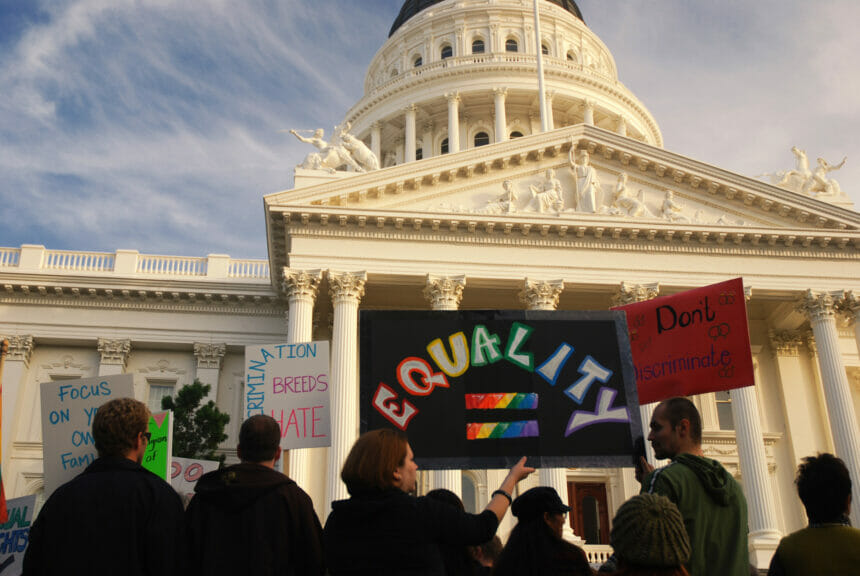President Joe Biden signed into law the Respect for Marriage Act on Tuesday, December 13, mandating all US states to respect same-sex and interracial marriages. The passing of this bill is a result of years of activism, as US citizens have been fighting for national marriage equality since the 1990’s.
Background
The 1986 Supreme Court case of Bowers v. Hardwick serves as one of the earliest examples of the US government’s discrimination against same-sex couples. In short, the case upheld a Georgia law criminalizing sodomy, even between consenting adults in one’s home. The Supreme Court defended its decision by claiming that there is not a constitutional right to privacy for consensual homosexual activity. Ultimately, this ruling set a precedent for future marriage equality efforts, as it established a national belief that gay sex is a criminal act.
Defense of Marriage Act
In 1996, President Bill Clinton signed the Defense of Marriage Act, defining marriage as the union between a man and woman. This law allowed individual states to not recognize same-sex marriages performed in other states, in turn denying them the same benefits and rights as heterosexual couples.

Timeline: 1999-2008
- 1999: California Governor Gray Davis signs a bill providing limited rights for same-sex couples. Vermont orders the legislature to establish same-sex marriage or equivalent status.
- 2000: California and Nebraska voters decide to recognize marriage as the union between a man and woman. Meanwhile, Vermont Governor Howard Dean signs a bill giving civil union rights to same-sex couples.
- 2002: Residents of Nevada vote to define marriage as the union of a man and woman.
- 2004: The Massachusetts Supreme Judicial Court declares same-sex couples must have the right to marry, as anything less constitutes discrimination. President George W. Bush, however, fights for a constitutional amendment that defines marriage as the union between a man and woman. During this year, same-sex marriages are performed in San Francisco, New Mexico, New York, New Jersey, Oregon, and Massachusetts, though they are all later invalidated. As a result, voters in Missouri, Louisiana, Arkansas, Georgia, Kentucky, Michigan Mississippi, Montana, North Dakota, Ohio, Oklahoma, Oregon, and Utah approve state constitutional amendments that only allow marriage between a man and a woman.
- 2005: The United Church of Christ becomes the first major US Christian denomination to affirm homosexuality as compatible with Christian living.
- 2006: Voters in Alabama, Colorado, Idaho, South Carolina, South Dakota, Tennessee, Virginia, and Wisconsin approve constitutional amendments defining marriage as that between a man and woman.
- 2007: Governors from Washington, Oregon, and New Hampshire sign domestic partnership bills into law. Meanwhile, California Governor Arnold Schwarzenegger vetoes same-sex marriage legislation for the second time.
- 2008: Voters in Arizona, California, and Florida approve the state constitution’s definition of marriage as between a man and woman. Moreover, Prop 8 takes effect in California, stopping the issuance of marriage licenses to same-sex couples. The Democratic National Convention declares their opposition to the Defense of Marriage Act.

Timeline: 2009-2015
- 2009: Legislators in Vermont, Connecticut, Iowa, Maine, Washington, Nevada, New Hampshire, Wisconsin, Colorado, D.C., and California begin to recognize same-sex marriages performed in other states or even allow same-sex marriage in their state. Democratic members of the House of Representatives introduced the Respect for Marriage Act.
- 2010: California’s Prop 8 is ruled unconstitutional.
- 2011: Legislators in Illinois, Hawaii, Delaware, and Rhode Island sign civil union bills into law.
- 2012: President Barack Obama is the first sitting US president to show support for the legalization of same-sex marriage. The Conservative Branch of American Judaism and the Episcopal Church approves same-sex marriages. Additionally, the Democratic National Convention takes an official stand in supporting marriage equality.
- 2013: Statutes authorizing same-sex marriage in Maryland, Delaware, Rhode Island, Minnesota, and Hawaii take effect.
- 2014: District judges strike down bans on same-sex marriages in the following states: Oklahoma, Kentucky, Virginia, Texas, Ohio, Idaho, Oregon, Pennsylvania, Wisconsin, Indiana, Florida, Louisiana, Missouri, North Carolina, Alaska, Arizona, Wyoming, Kansas, South Carolina, Montana, Arkansas, and Mississippi.
- 2015: On June 26, the US Supreme Court rules that same-sex marriage bans are unconstitutional under the Fourteenth Amendment, making same-sex marriage legal throughout the entire country.

Why do we need Respect for Marriage?
The path to true marriage equality has been long, so it’s easy to wonder why supporters stuck it out. I mean, aren’t civil unions close enough to marriages? And, does it really matter if states don’t recognize a marriage performed in another state? In order to understand the importance of such a legislature, it is necessary to understand how marriages are different from civil unions.
As a way to deter the community from fighting for marriage equality, same-sex couples were able to compose civil unions. Marriage and civil unions are both relationships between two people that provide legal protection to the couple. Though seemingly similar, married couples have access to more than 1,100 federal rights than those in civil unions. Since civil unions are only recognized at the state level, couples do not enjoy benefits from the federal government. Additionally, individual states may not recognize civil unions, leaving couples with that many fewer rights.
Moving Forward
Overall, the Respect for Marriage Act was just another step in the right direction. As seen in our society’s media representation, US residents are still resisting same-sex couples. Moreover, though we have it now, the rights of marginalized groups are always being threatened. As modeled with Roe v. Wade, consistent activism is necessary to maintain and continue our efforts for equality.













